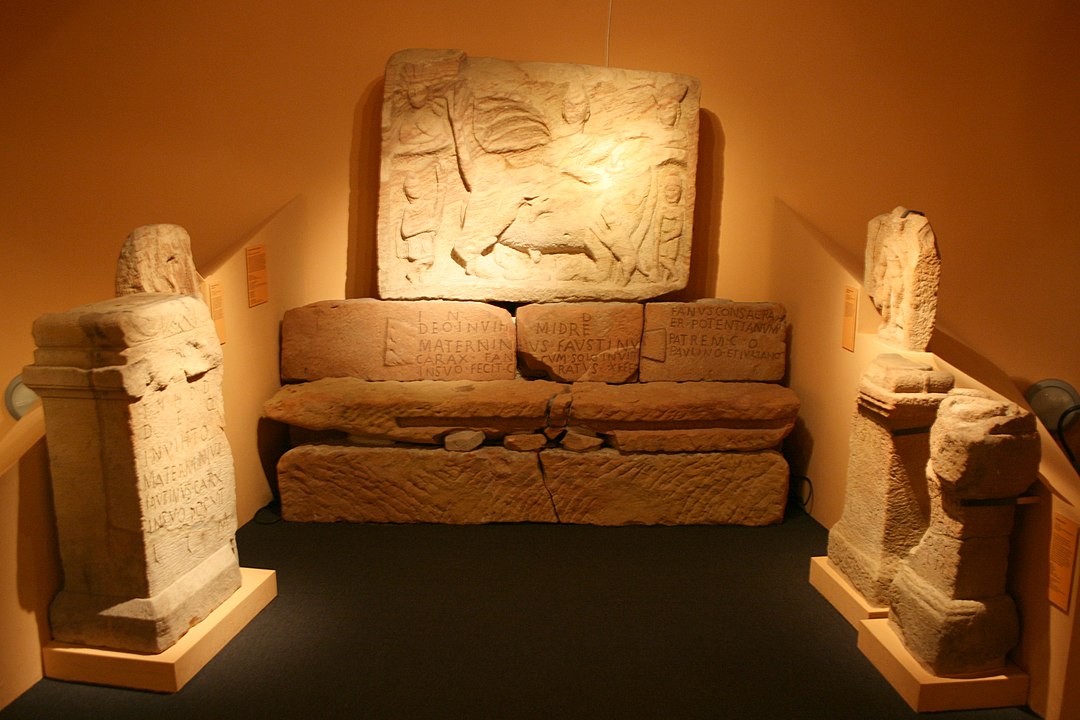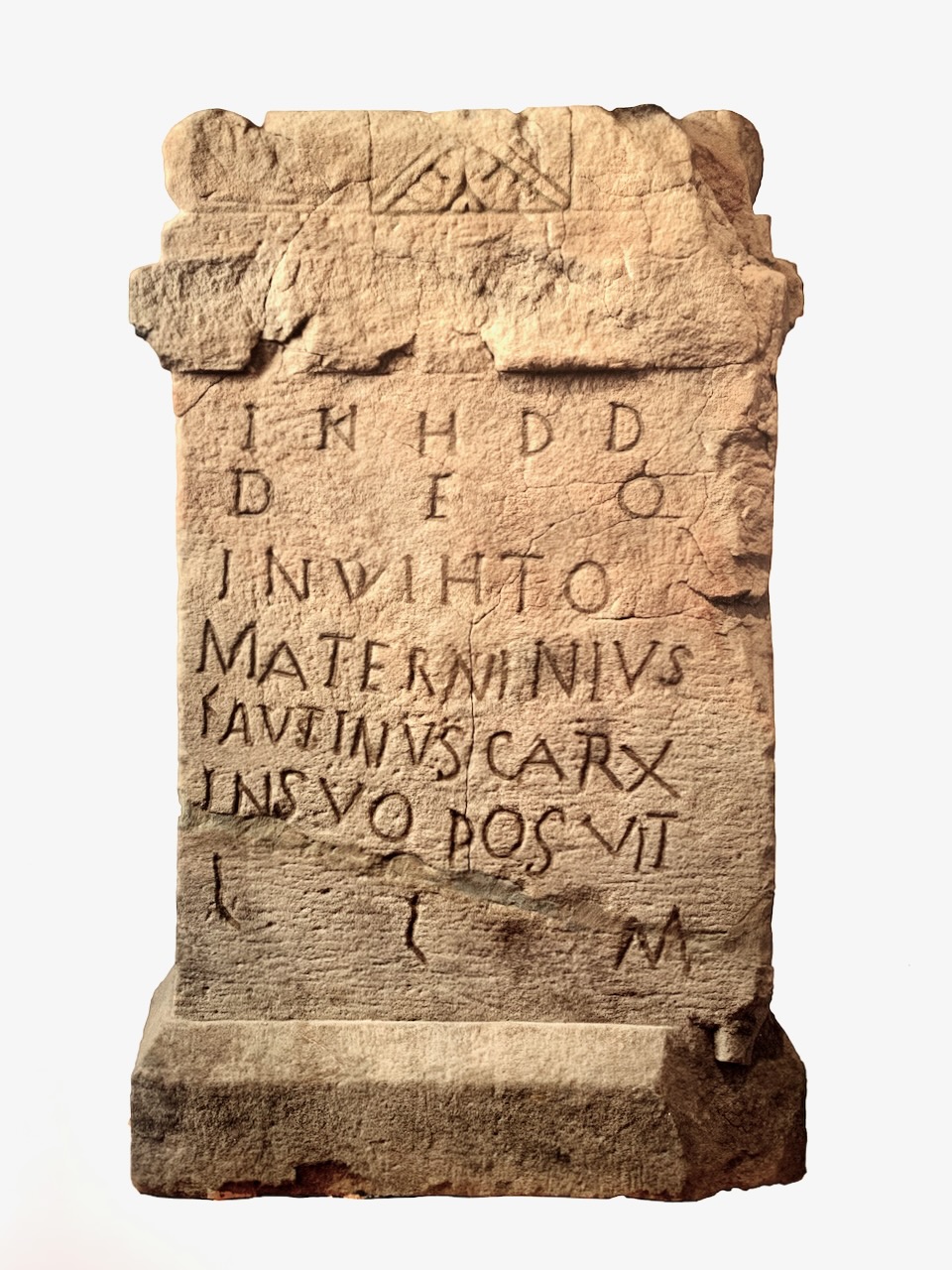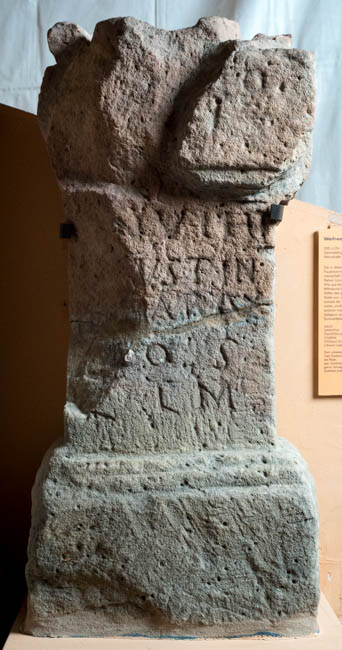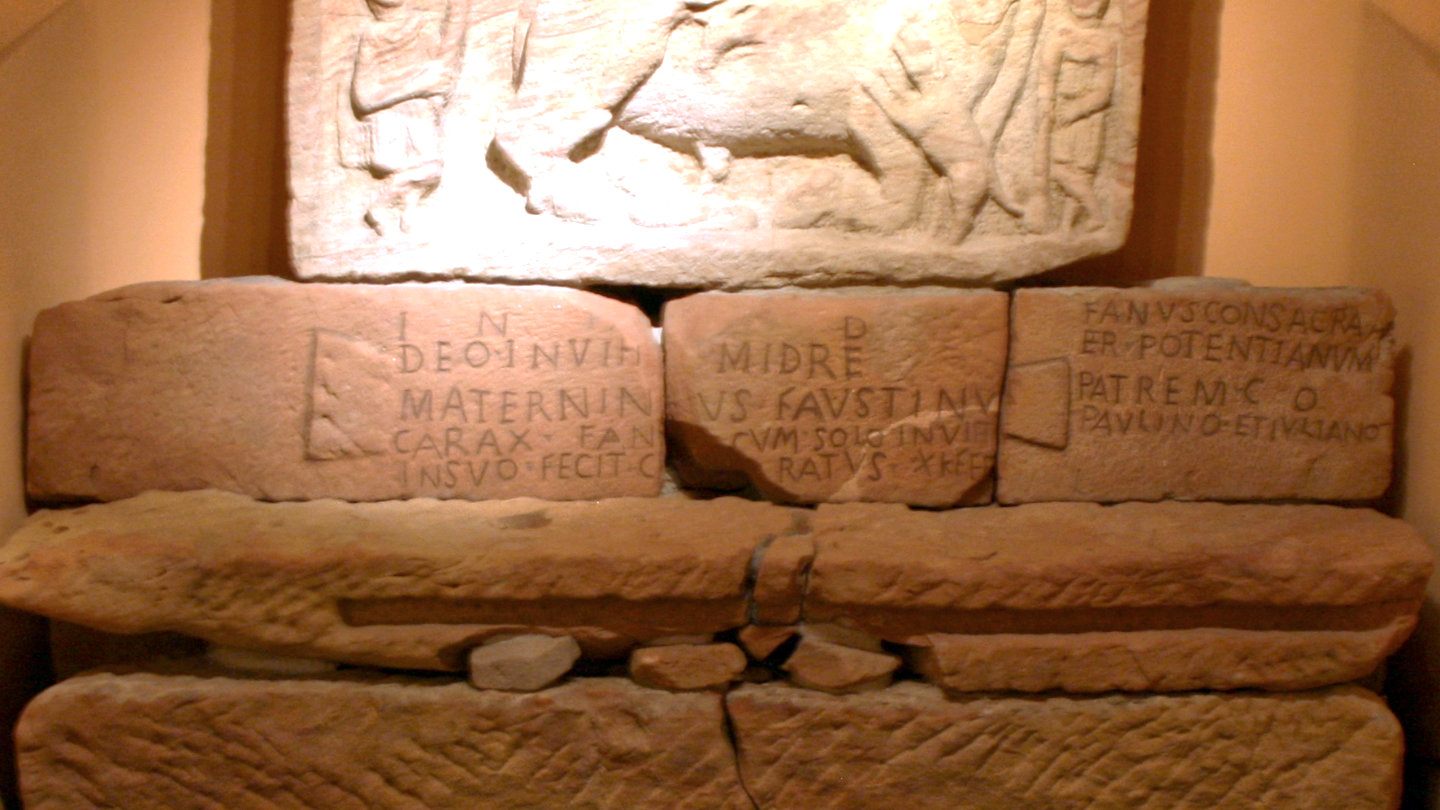Biography
of Materninius Faustinus
- Materninius Faustinus was a Corax of the Mithräum von Gimmeldingen.
- Active c. 325.
TNMP 23
Materninius Faustinus built on his property one of the last known to date. He also ordered the construction of several of the monuments that decorated his temple, including the main tauroctonic relief. In two of the inscriptions found, Materninius is mentioned as Carax (Corax), i.e. the first grade of the Mithraic scale. The sanctuary, called fanum, was consecrated by a Pater by the name of Potentianus.
—The New Mithraeum 2022.
On 23 January 325 AD, Materninius Faustinus, an initiate of the first grade, that of Corax, in the Mithraic cult, had a temple of Mithras built in the town of Gimmeldingen, Germany. His dedication is engraved on the base of the cult relief of the temple. He also erected two altars and possibly a third with a similar inscription. Remarkably, Faustinus’ dedication is one of the last epigraphic testimonies of the Mithraic cult in the north-western provinces of the Roman Empire.
Its fervour was all the more remarkable given that the religious landscape of the Empire was in a state of flux: the Mithraeum was built just four months after the accession of Constantine I, who was perhaps already sympathetic to Christianity. Although there are later inscriptions dedicated to Mithras in regions such as Numidia and perhaps Phoenicia, the Faustinus dedication provides an invaluable insight into the continuing appeal of the Mithraic mysteries in the face of a burgeoning Christian empire in the former Gimmeldingen and the wider Rhineland.
Mentions
Altar of Faustinus from Gimmeldingen
Corax Materninius Faustinus dedicated other monuments found in the same Mithraeum in Gimmeldingen.
TNMM 444
Altar of Faustinus from Gimmeldingen
This sandstone altar was dedicated to the god Invictus by a certain Faustinus from Gimmeldingen.
TNMM 694
Inscription of Corax Materninius Faustinus of Gimmeldingen
The inscription was located at the base of the main Tauroctony of the Gimmeldingen Mithraeum.
TNMM 441
Fanus (sic) consacrat(us) / per Potentianum / patrem co(n)s(ulibus) / Paulino et Iuliano /l(ibens) l(aetus) m(erito).
References
- Eberhard Sauer (1999) The End of Paganism in the North-Western Provinces of the Roman Empire. The exemple of the Mithras cult




